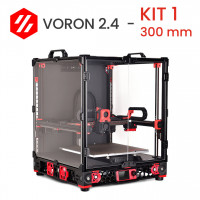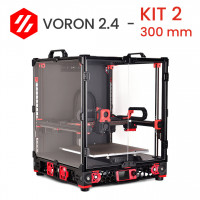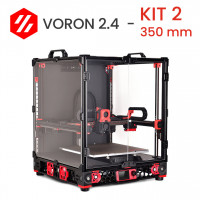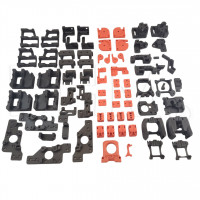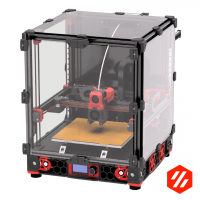What is VORON design?
Voron is a project that began in 2015, with the goal of creating a 3D kit printer whose assembly was fun and use was equally satisfying because of the quality and speed achieved by 3D prints made with these machines. Starting in line with the idea open source RepRap then took a path of its own.
It was to be a 3D printer that was quiet, clean, beautiful, and operated 24 hours a day without requiring any intervention: in short, a 3D printer in kit form with performance aimed at achieving the performance of industrial machines.
Since designing the first model at Voron, community has been dedicated to creating quality printers that can be assembled at home, complete with step-by-step guides and various online channels for support.
Our team has embraced the project for some time now, and now, after building a few examples to evaluate its performance and features, as well as upgrades, we are ready to support it on the front lines as well.

Why build a 3D printer VORON?
The Voron project has evolved over time to come to offer the approach that a person expects from a 3D printer today: a high-performance machine that can be built as a kit.
So why invest of one's time in building a 3D printer Voron?
- Voron printers have many features
- They are customizable in various configurations
- They are available in different types and different sizes depending on your needs
- Thanks to the wide range of customization options, even technical materials can be printed with excellent results
- All are born to have closure panels (except Legacy), so closed-chamber printing helps in obtaining better printing results even with the most difficult filaments
- They are in continuous development and improvement thanks to a solid community
- They come in kits, and this is where you develop your skills in building and setting up FDM 3D printers
- Being able to choose both the model and the material to be used for construction, the prices are attractive
What are the models of Voron available?
We make here a brief guide that can help you decide which 3D printer Voron to build, and better understand the different models available.
Currently the Voron family has 5 different models of 3d printers:
- Voron Zero
- Voron Trident
- Switchwire
- Voron 2
- Legacy
To avoid misunderstanding, it is good to know that initially the models Voron were named using numerical values. In fact the Voron 2 is not the newer versine of the Voron 0, but are two separate machines.
The naming convention is slowly changing and moving away from numbers to model-specific names. The first was Voron Switchwire , announced in August 2020, and Voron 1.8 has been upgraded to Voron Trident starting in August 2021.
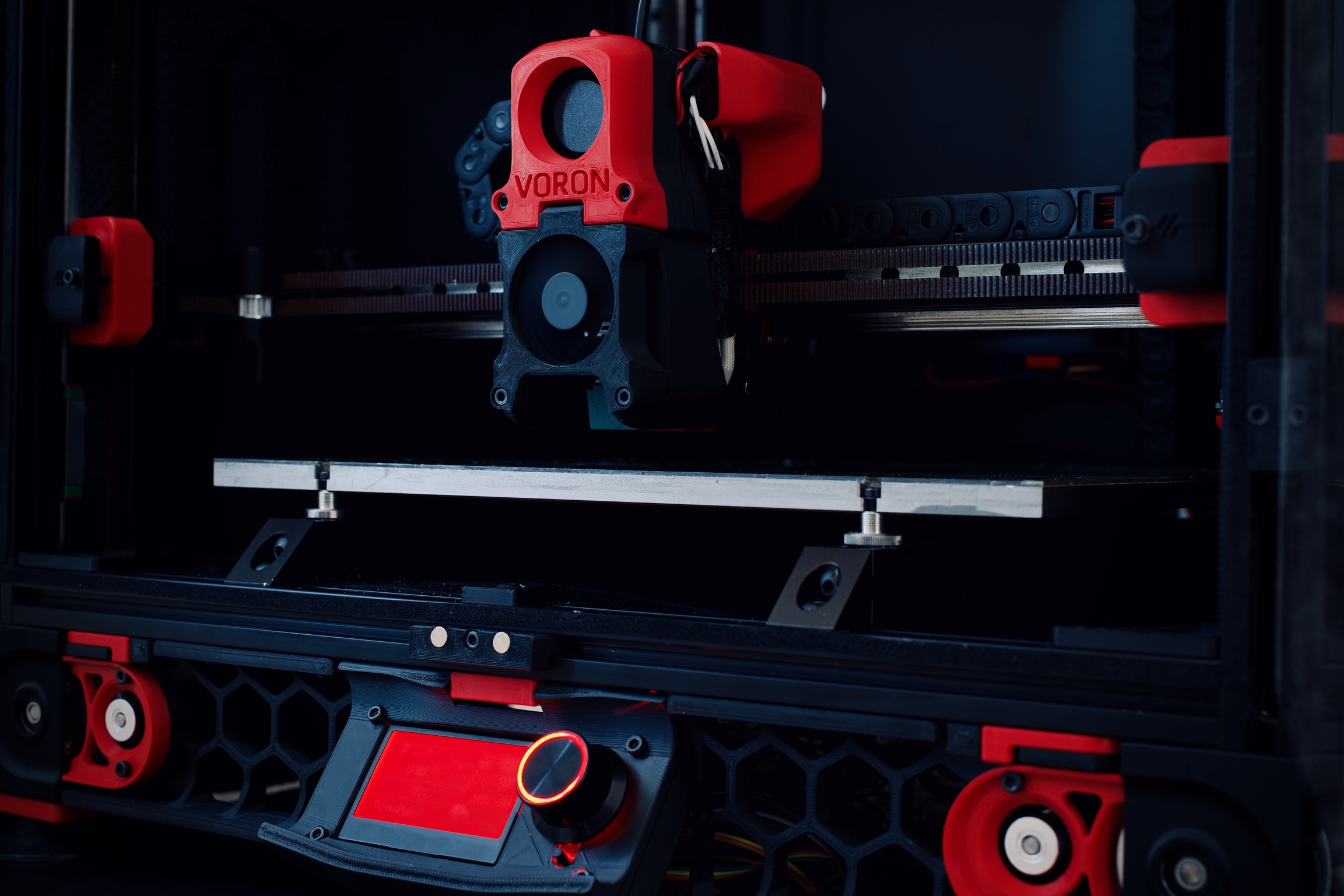
VORON ZERO
The Voron Zero is based on a traditional CoreXY movement, with the printing plane moving along the Z axis. It is a small 3D printer, in fact it has a print area of 120 mm^3, built with 1515 aluminum profiles.
It provides for locking panels as a base, so it is possible to print ABS and other filaments that prefer closed chambers.
The Voron Zero provides only one standard size. It can be scalable, given the modular structure, but having MGN7 guides and cantilever bed the size cannot be increased much. For larger volumes we recommend Voron 2 or Trident.
The current version of the Voron Zero model is V0.1.
VORON TRIDENT
The Voron Trident model is based on a traditional CoreXY movement with a fixed gantry (XY axis) and the 3-point bed moving along the Z axis. It is simpler to construct than V2, and involves fewer components. The structure is naturally enclosed, making it easy to print ABS or other temperature-sensitive filaments. It uses linear guides with skids for all axes. The X and Y axes are driven by belts and stepper motors, and in the Z axis we find trapezoidal screws, again coupled with stepper motors.
There are 3 standard sizes:
- 250x250 mm print area
- printing surface of 300x300 mm
- printing surface of 350x350 mm
Z-height is somewhat limited due to the use of stepper motors with integrated screw. In fact, a maximum height of 250 mm is achieved unless custom screw motors are installed.
VORON SWITCHWIRE
The Voron Switchwire is a Voron -style reimagining of a classic Mendel design (aka "bedflinger").
It is a CoreXZ printer, so the extruder moves belt-driven in the X-axis and Z-axis, eliminating the typical trapezoidal screw Z drive. This allows very high Z movement speeds. The rigid 3030/3060 profile structure allows for great stability during printing and a case that ensures smooth movement of the Prusa 250x210mm printing table.
VORON 2.4
The Voron V2 is a modified motion 3D printer design CoreXY.
There is a static bed and a gantry that moves along the Z axis. It is a much more complex construction than the other Voron models because it includes elements such as tramming (the leveling) of the 4-point gantry to align with the printing surface, two MCUs (microcontroller units) and other unique features. It is designed to be fully enclosed, so it prints ABS or other technical filaments that need a closed chamber very well.
Due to the linear guides used MGN9 and MGN12, 3 standard sizes are provided:
- 250x250 mm printing surface
- printing surface 300x300 mm
- printing surface 350x350 mm
Due to the modularity and scalability of the components (structural profiles, linear guides, belts and wiring), it is possible to make customized specimens to meet any requirement. The complexity of construction and the technical skills required for assembly, the number of components and the size of the printing volume make the Voron 2 the most expensive model in the family Voron.
At the same time, these features also make it the most exciting model to build and performs well when properly calibrated and set up.
The current version is V2.4r2.
LEGACY
The Voron Legacy is a tribute to the roots of the Voron and RepRap project. It is a return to the classic design using LM8UU bars and bearings in the 230 mm^3 size, but the extruder assembly is enclosed in theAfterburner. This model is not designed to be enclosed by external panels, so its applications are more limited than the other models.
Which is the best 3D printer Voron?
Let us focus on the 4 main models of 3D printers Voron:
- Voron 0.1
- Voron Trident
- Switchwire
- Voron 2.4
After summarizing the main features of these machines, we can say that each one has its pros and cons.
So which printer Voron should you build? It all depends on what you are looking for.
For example, the Voron Switchwire is a great way to upgrade your Ender 3 Pro/V2.
The voron 0.1, on the other hand, with its small size is ideal for those who need to print small objects and small prototypes. Its small size allows you to place it in a variety of places, even on your desk! Despite this, however, given the handling CoreXY it features a high speed and a rigid structure that allow for excellent printing characteristics when set up in the right way.
The Voron Trident is the model most comparable to the Voron 2.4, it is a good choice for those who do not have much experience in building 3D kit printers, and for those on a tighter budget.
What then to say about the Voron 2.4? It is the most expensive model in the Voron family, but its features are unparalleled. It is the most exciting model to build and performs well when properly calibrated and set up. It features a large print format and unbeatable speed.
How do you build a Voron?
There are a few aspects to consider before getting started.
If you are going to build your first printer Voron we recommend that you first follow the official guides. There are many upgrades to be found online, developed by different contributors to the project, but starting with the main steps is definitely the right way to get a working printer up and running in a short time and set up correctly.
Regarding dimensions, it is also possible to build a Voron of dimensions configured to size with a larger print area than those available as standard. However, configuring the dimensions to size implies special attention to all scalable components that must maintain proportions and accuracy. This is specifically for the linear guides and the frame. It also involves several settings in software configurations that may require additional time.
All models involve the use of heated platens powered by mains voltages. So be sure to follow all instructions and safety measures related to this. Failure to do so could result in electrocution and/or fire.
If you are approaching the world for the first time Voron the time to build a printer is variable. It can take you a couple of days, if you already have all the materials on hand, to a few weeks or a few months, if the assembly is done one step at a time. You can take as much time as you need.
We recommend before you begin that you establish your own schedule for the assembly process, so that you have all the components on hand as you proceed with construction.
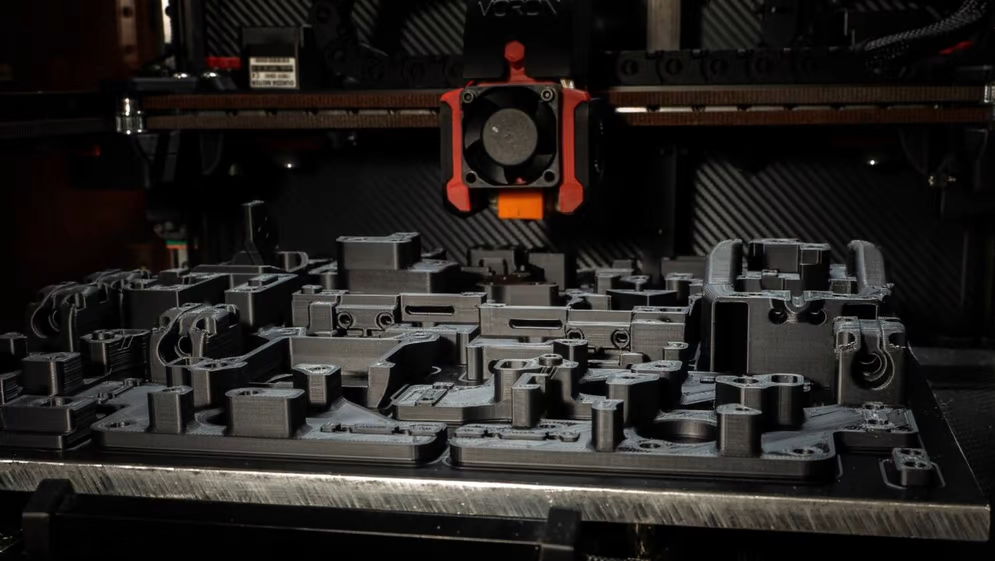
Where can I find useful information about 3D printers Voron?
You can check out the links below, to get more information about the project Voron, the different models, lists of materials needed for construction, firmware configuration and support of community. You can view the project and download all the contents using this link on the official website: VORONDESIGN.COM
You can configure the model according to your needs, and a complete list of materials needed (BOM - bill of materials) will be provided. You can also get the files from the official github: GITHUB - VORONDESIGN
Here you can download the STL and CAD files from the printer page, and you can also find the model-specific manual here. The STL archive contains all the 3D printable parts, while the CAD files are useful as an optional visual reference when assembling the printer.
Official documentation can be found here: DOCS - VORONDESIGN
Finally, VORON Design's official Discord server is the best place to ask for help when you hit snags in construction or setup. Just check the comments in the relevant sections for common questions and problems.
Here is the link: DISCORD - VORON
Are Voron printers for everyone?
Some models are easier than others to build, but it certainly helps to have previous experience with 3D printing.
For someone who has already assembled a control machine, such as another 3D printer or CNC machine, there should not be too many difficulties.
For someone, however, who is just starting out, you will surely find plenty of material online, as well as official manuals and authoritative reviews that can help you in building and calibrating the machine.
How can I retrieve the kit materials to build my first Voron?
In addition to retrieving materials through the list provided directly by Voron Design, it is also possible to purchase printers Voron in kit form. Various kits can be found on the market, mainly from Asia. We urge you, however, in that case to be careful in your choice because many are characterized by low quality of components. Especially for critical components, especially electronic components that can create safety issues. For mechanical components, on the other hand, they can result in low performance when the printer is put into operation.
If you want to build your first Voron stay tuned for upcoming news, you will not regret it!
Image Credits @vorondesign.com







